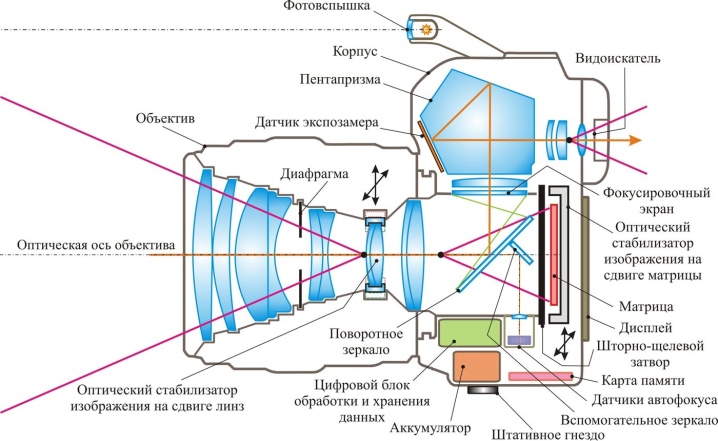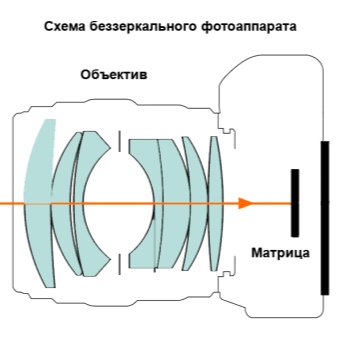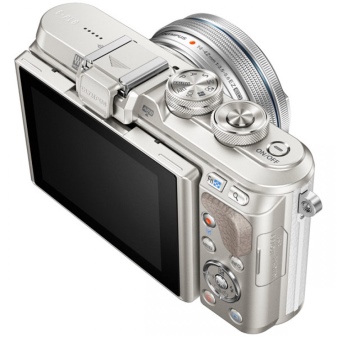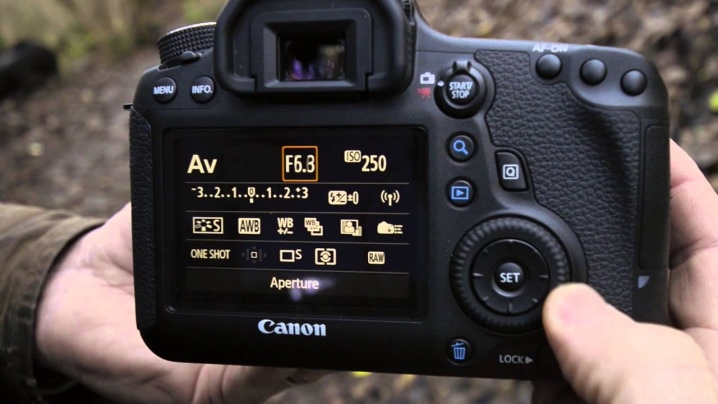How are DSLRs different from mirrorless cameras?

Photography occupies a special place in the life of almost every modern person. You can capture interesting moments and events both with a camera on your smartphone, and using a professional or amateur camera. Choosing the best camera option is not an easy task, and its solution depends on specific preferences and requirements for the quality of photographs. The most common are SLR and mirrorless cameras, but each of these categories has its own characteristics and options.



Advantages and disadvantages
Any SLR camera is subdivided into an analog model, working with photographic film, and executed in a digital version. In turn, the digital version of the camera can be SLR or mirrorless.
Any SLR and mirrorless camera model has its own specific advantages and disadvantages.


Mirrored
All SLR cameras have a mirror located behind the lens. It directs the reflected beam of light into a special pentaprism, which is equipped with a viewfinder. Thanks to the pentaprism, the image is natural and not upside down. The focusing of the lens in digital SLR cameras is realized automatically with the help of a module of special sensors, to which a beam of light is transmitted from a mirror reflector. When you press the shutter, the mirror behind the lens rises, and the light flux enters the matrix, which exposes the image of the frame.

Pros of SLR cameras:
- when the object moves quickly, there is no slowdown during shooting and this eliminates picture distortion;
- the optical device of the viewfinder makes it possible to see the frame without interfering with this process of the electronic system;
- the block of sensors responsible for automatic focusing ensures high-quality and fast operation of the camera.



Disadvantages of DSLR cameras:
- structurally, a camera implies a large number of moving elements, as a result of which the reliability of such a camera is reduced in comparison with its other counterparts;
- the cost of the camera is quite high, since the component parts are difficult to manufacture;
- due to the fact that a mirror that rises behind the lens is built into the camera, it is difficult to make the camera body compact;
- when using the long exposure mode, the rising mirror covers the viewfinder, as a result of which the frame becomes visually inaccessible for review.


Currently, the designs of new generation cameras are changing, and the shortcomings are being eliminated. For example, modern SLR cameras began to be equipped with the Live View option, thanks to which a rising mirror, even with a long exposure process, allows the camera to display the frame on the screen. This option helped to implement video filming on SLR devices, which had not been done before.

Mirrorless
Cameras of this type provide high quality photography, which gives room for creativity, as well as good performance. Mirrorless cameras are more compact than their DSLR counterparts. They got their name for the reason that the design has no mirrors - they do not have an optical viewfinder. Mirrorless cameras give access to view the image on a special LCD-display, or this option is carried out using an electronic viewfinder.
Mirrorless cameras are somewhat simpler than their SLR counterparts. There is no mirror, no pentaprism, no optical model of the viewfinder and no phase sensor unit in their design. The light beam enters through the lens, and then, in the form of a projection, enters the matrix. At this point, the electronic processor receives the signal and converts it into a video signal that is transmitted to the LCD display.


Benefits of mirrorless cameras:
- Mirrorless cameras can be produced in very compact sizes;
- there is not a large number of different mechanisms inside the camera, so it is reliable and its cost is lower than that of mirror models;
- many photographers, especially novice amateur photographers, use an LCD display rather than a viewfinder;
- on the camera, you can view captured frames made with custom settings and filters.



Negative sides of mirrorless cameras:
- when using the camera his processor and display are constantly running, which leads to the rapid depletion of nutrients;
- if you look at the display in bright sunlight or artificial light, then glare on the screen makes it difficult to see;
- the captured image is processed by the processor, while some of the brightness and contrast may be lost;
- the processor does not work instantly, therefore, the display of the picture on the display is carried out with slight delays.
Modern models of mirrorless cameras, as well as SLRs, are undergoing design improvements. Processors are being made faster, LCDs, optics and sensors are also being upgraded.

Comparison of functionality
Despite the high quality of SLR cameras, the development of mirrorless technology has become so high that it allows you to take pictures of the same quality. However, in professional photography, mirrorless equipment is still almost never used. The difference between a DSLR and a mirrorless camera, in the opinion of professionals, is significant.
- The functional difference between SLR cameras and mirrorless cameras is that DSLRs of any type have options for manual settings, which, with the right approach to business, can give excellent results.
But it is worth noting that modern mirrorless cameras have already begun to be equipped with options for manual settings, and in some models they are presented no worse than their mirror counterparts. Only with SLR cameras, manual settings are more difficult to use, since they are hidden behind a huge number of automatic adjustments.


- Interchangeable lenses... The flagships of interchangeable-lens reflex cameras (Nikon and Canon) produce a wide range of lenses that are designed for different photography conditions, while mirrorless cameras do not have such a variety and choice. Mirrorless cameras have a different approach to solving this issue. For example, the brands Panasonic and Olympus use the same type of mount in their products, which significantly expands the choice of lenses.

- Dimensions and weight. Mirrorless models are larger and heavier than mirrorless models. But not always light weight and size is convenient. For example, in mirrorless cameras with an APS-C sensor, the use of a heavy lens makes the camera not very convenient to use.

- The presence of a viewfinder. DSLR cameras are equipped with optical viewfinders, while mirrorless models have LCD displays on which the user can see what he plans to shoot.
Expensive modern mirrorless cameras can have both an optical and an electronic viewfinder at the same time.

- Automatic focusing. For shooting a fast-moving subject, autofocus is better suited for SLR cameras.The focusing process for DSLRs occurs when the mirror is still in the lowered state. In the viewfinder of a mirrorless camera, focusing occurs only after the shutter is pressed. A number of Canon cameras are equipped with hybrid viewfinders, where AF elements are already built into the sensor.

- Performance shooting with mirrorless models is higher than that of the top-end DSLR cameras. Due to the lack of a mirror in the camera and fewer mechanisms, mirrorless cameras adjust focus faster and begin the shooting process. For example, a SLR camera takes 14 frames in 1 second, while mirrorless analogs can take 40-60 frames in the same period of time.

- Possibility of video filming. The most adapted in this sense are SLR cameras. It is with their help that video is shot in HD or Full HD format. But the next generation mirrorless cameras already have the ability to shoot in 4K, which is not possible with DSLRs.

- In terms of photo quality there is no fundamental difference between mirror and mirrorless models. In DSLR versions, a full-frame sensor or APS-C is more often used. Mirrorless manufacturers do the same, but less often. The highest resolution of 50 Mpix can be found on mirrorless models, while for mirrorless counterparts, the ceiling is 42.5 Mpix.

- Mirrorless cameras are considered to be the most power-hungry. which, with a full battery charge, are capable of shooting from 300 to 400 frames, while a DSLR camera without additional recharging will provide you with 800 to 1000 photos.

- Price. When looking at mid-range models, even the most inexpensive DSLR can offer more options than a mirrorless counterpart at the same price point. For professionals, this approach is not appropriate - their SLR photographic equipment is expensive, but it has a certain range of capabilities that are necessary for a professional photographer.


As with any comparison, mirrorless and mirrorless models have their own advantages and disadvantages, so the choice of option depends on the preferences and capabilities of the consumer.
What is the best choice?
The choice of camera depends on the purpose for which you intend to use it. If you are still a beginner photographer, then for taking photos, as well as for video, a mirrorless inexpensive model will be enough for you. After you master this technique well and reach the professional level of shooting, then a mirrorless camera should already be changed to a DSLR version.
It can be reasonably argued that modern mirrorless camera models have long had the ability to shoot no worse than SLR photography equipment. Although for filming in a studio, the specialist is still recommended to use an SLR camera., and for those who love hiking and travel, a mirrorless option would be quite appropriate and compact.

When choosing a camera, it is most advisable to find a model that can take at least 5 pictures in 1 second. If you want to shoot fast-moving objects, then you will have to look for a camera that is capable of shooting from 10 to 20 frames per second.
Besides performance, the choice of the camera also depends on its dimensions. Check how comfortable it is for you to hold the camera in your hand and whether it will not be too heavy for you, not only during shooting, but also during long transportation. Besides, it is worth paying attention to the convenience of finding the options you need in the settings management menu.
Choose for yourself the interface that will be intuitive to you and will allow you to quickly find what you need.

A good camera is distinguished not only by a set of options, but also by the ability to use interchangeable lenses... Most mirrorless models are sold with a stationary lens, but if it can't reach the full potential of the camera, then over time you will want to buy one or another lens. Its choice depends on the conditions and purposes of shooting.
If you have a Nikon camera, then in order to use a lens from a Canon camera, you will need to purchase a special adapter adapter, but such a docking station can degrade the quality of shooting. In this case, it will be necessary to choose such models of cameras where lenses can be interchangeable. For example, Olympus and Panasonic cameras can use each other's lenses without using an adapter adapter.
For more information on how DSLRs differ from mirrorless cameras, see the next video.













The comment was sent successfully.